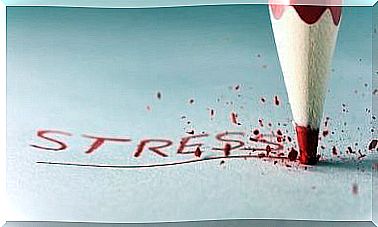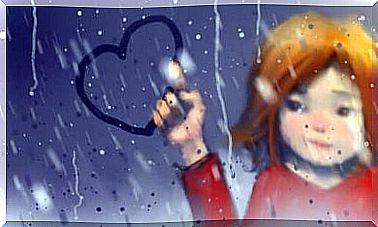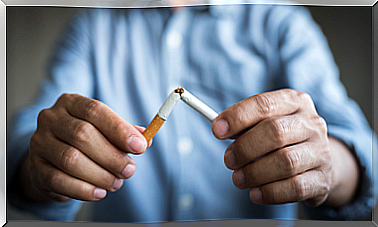5 Obsessions You Might Not Know About

A mania is a capricious, and sometimes extravagant, preoccupation with a particular subject or thing. In popular culture, being manic is associated with adhering to certain rigid patterns of behavior, slightly resistant to change, but perfectly avoidable at will, without causing too much anxiety. In general, a mania does not entail any problems other than a possible and minimal waste of time, for example. But what happens if these worries and quirks turn into obsessions?
It should be noted that, in colloquial language, the terms “mania”, “obsession” and “passion” tend to be taken as synonyms (or almost synonyms). This synonymy is not correct from a psychological point of view, since mania refers to an excessively euphoric and thoughtless state of mind. However, establishing this parallel between the words mania and obsession makes the subject easier to understand.
One thing is certain: you can be obsessed or in love with almost anything you can imagine. There is also no one who is free from being a little “manic” and, at any moment, any of us can find ourselves performing ritualistic behavior.
We know many of these obsessions and we know what they are called, such as melomania (obsession or passion for music). However, many others are not known or we do not know how to name them. We will see some of them below.

Glazomania: obsession with lists
Glazomania is the unusual obsession, passion or fascination with making lists. This obsession can be used as a tool to be more efficient or even to reduce the level of stress, thanks to the fact that lists work as a form of anticipation.
People with glazomania find that making lists helps them stay organized. It is necessary to distinguish between being passionate about lists and other disorders such as OCD or obsessive-compulsive personality disorder.
In the case of OCD, in the verification OCD subtype, the presence of certain obsessions causes the emergence of compulsive behaviors, in this verification case, to reduce anxiety. In this context, the use of lists can become a verification strategy that allows interrupting the compulsion. For example, check if the item “close door” is checked in the list, instead of looking at the door to check.
According to the DSM-5, obsessive-compulsive personality disorder is a preoccupation with organization, perfectionism, and efficiency. Among the diagnostic criteria collected for this disorder is the concern with details, rules, lists, organization… to the point of neglecting the main objective of the activity (that is, the objective of the list itself).
Both disorders bring significant suffering or impairment in social, professional or other important areas of life. This characteristic is what distinguishes glazomania, or the simple taste for making lists, from a disorder such as those mentioned above.
Pharmacomania: obsession with taking medication
As its name implies, pharmacomania is the obsession with taking medications in situations where they would not be needed or for purposes for which a particular medication is not indicated. This concept may be related to pharmacophilia (as opposed to pharmacophobia) which is the inclination or predisposition to take medication.
Among the disorders that may be related to this concept, we find hypochondria, as well as pain disorders and fibromyalgia. The behavior of taking a medication “as a precaution” is related to the use of analgesics in patients suffering from chronic pain as a strategy to avoid pain.
In the case of hypochondria, the fear of suffering from an illness can lead to excessive intake of medications to preserve or improve some physiological function. An example might be the patient who takes laxatives daily to have adequate intestinal transit and avoid the intestinal obstruction that he fears so much.
However, associated with hypochondria we also find the opposite pole: resistance to taking medications for fear of side effects.
Obsessions related to rest: catisomania and clinomania
In this area there are different obsessions related to different aspects of rest, such as sitting, lying down, or, directly, sleeping. All are very similar, but they have subtle differences that we’ll explore.
Catisomania is the obsession with sitting. It’s not just the enjoyment of sitting, it’s an irrepressible need to sit. It can even lead to taking the seat of elderly or pregnant women on public transport, sitting on the floor while in line, or sitting on a stand in a store, etc.
Catisomania is not to be confused with clinomania, which is the obsession with lying down, nor with hypnomania, which is the obsession with sleeping. In the case of clinomania, a person’s life revolves around lying in bed.
Tanorexia: obsession with being tan
Tanorexia is the obsessive need to have a darker, more tanned skin tone. It could be considered an addiction or a subtype of body dysmorphic disorder. These people are overly concerned about a defect, real or imagined (having fair skin in this case). People with tanorexia associate tanned skin with beauty. Furthermore, they consider themselves unable to live without a sunbath or UVA rays.
Strategies to get a tan consist of prolonged sessions of UVA rays or long periods in the sun, usually associated with risky behavior. For example, sunbathing or UVA without the proper use of sunscreen and even using tanning accelerators that put your skin’s health at risk.
The beneficial effects of sunlight on our health are well known; however, prolonged or unprotected exposure increases the risk of skin problems. These can range from sunburn, skin cancer or melanoma, to premature skin aging.
The treatment of tanorexia depends on its origin. On the one hand, it can be conceptualized as an addiction or a body dysmorphic disorder. On the other hand, sunbathing can be done at different times, as a way of self-management of a depressive disorder with a seasonal pattern.
Furthermore, we know that sunlight promotes the release of endorphins and creates a feeling of relaxation, well-being and euphoria. Therefore, in addition to psychological treatment, other ways to increase endorphins should be sought to replace excessive sunbathing, such as exercising, listening to music, laughing or eating.

Reflection on obsessions
These five obsessions described here are just a small sample of the great existing repertoire. They are generally not serious and should not be given more importance than they are. In fact, having any of these obsessions or “being a little manic” isn’t bad as long as it doesn’t affect the daily quality of life or cause anxiety.
We must prevent those peculiarities that make you unique and special from becoming those unbearable quirks of yours. This is achieved in a simple way: being flexible and tolerant.
A mania cannot make us go beyond certain limits in living with others, nor can it make us want to completely control the way others act. If that happens, if a craze diminishes your quality of life, it’s time to consult a professional.









